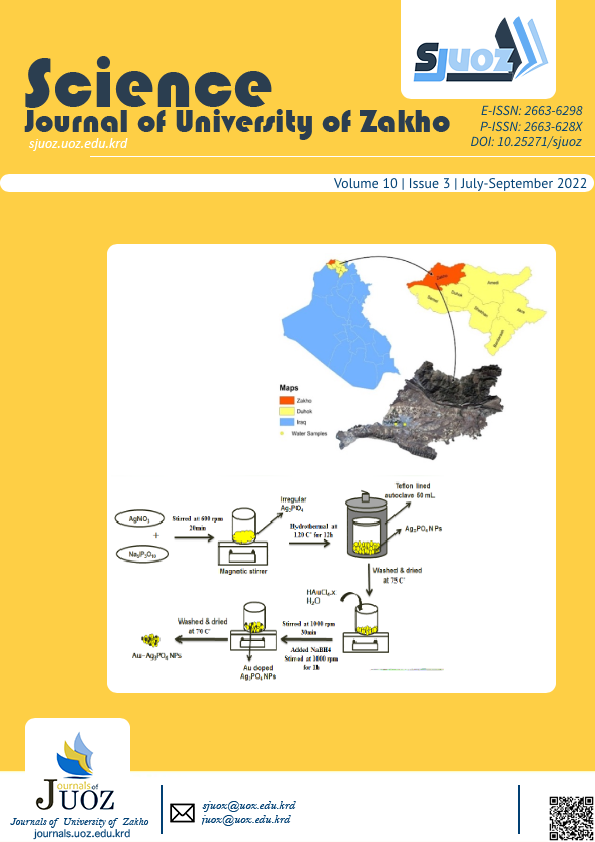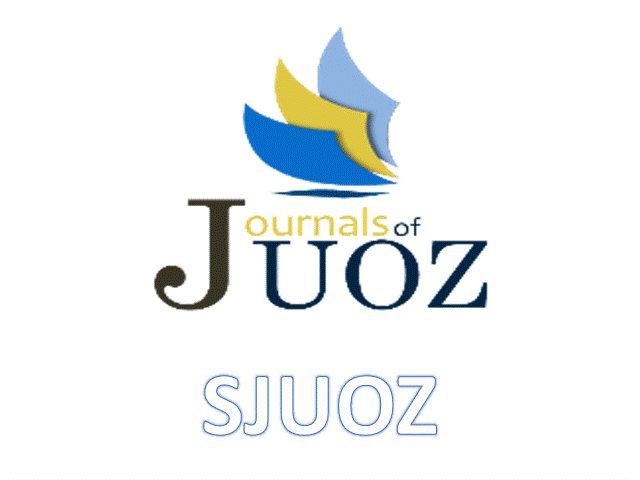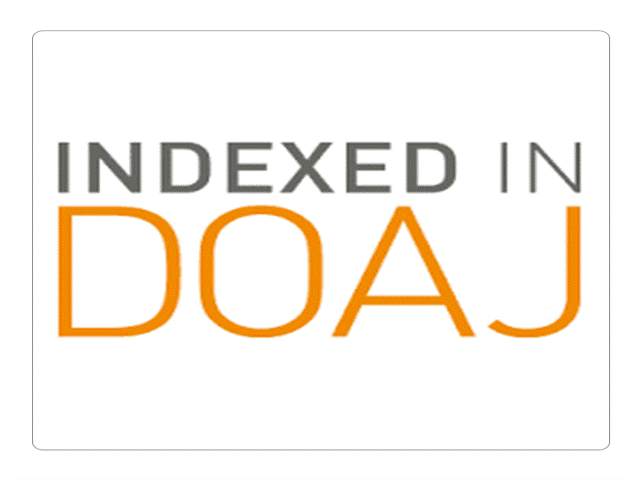Synthesis and Molecular Docking Studies of New Series of Bis-Schiff Bases Thiadiazoles Derived From Disulfides and Thioethers with Potent Antibacterial Properties
DOI:
https://doi.org/10.25271/sjuoz.2022.10.3.932Keywords:
Thiadiazole, Schiff base, Molecular docking study, Biological activity, and Antibacterial resistance.Abstract
Two new series of various heterocyclic bis-Schiff bases of Thiadiazoles disulfides and thioethers are synthesized. The first series was the synthesis of bis-Schiff of thiadiazole disulfides (4a-h) synthesized from their corresponding Schiff bases after oxidation by hydrogen peroxide. The second series was the synthesis of bis-Schiff base thiadiazole thioethers (7a-h). It was obtained from the reaction of bis-thiadiazole diamine (6) with different aldehyde. The diamine (6) was generated by reacting thiadiazole with dibromoethane in dimethylformamide and triethylamine as a catalyst. All of the synthesized compounds were analyzed by using FT-IR, 1H-NMR, 13C-NMR, and C-APT techniques. The synthesized compounds were screened against two gram-positive bacteria (Staphylococcus and streptococcus), and two strains of gram-negative (E. coli and klebsiella) in comparison to two standard strong antibiotic drugs (ciprofloxacin and vancomycin). Generally, all the synthesized compounds showed highly antibacterial properties, particularly, compounds (4b,4f, and 7b) which observed potent anti-bacterial properties against both gram- (positive, negative) bacteria were even higher than the standard drugs. Lastly, molecular docking studies were also applied to find the binding affinity and active sides of the products with the target proteins.
Downloads
References
Azam, S. S., & Abbasi, S. W. (2013). Molecular docking studies for the identification of novel melatoninergic
inhibitors for acetylserotonin-O-methyltransferase using different docking routines. Theoretical Biology and Medical Modelling, 10(1), 1–16.
Bakht, J., Islam, A., Ali, H., Tayyab, M., & Shafi, M. (2011). Antimicrobial potentials of Eclipta alba by disc diffusion method. African Journal of Biotechnology, 10(39), 7658–7667.
Durmuş, S., Dalmaz, A., Dülger, G., & Kadıoğlu, D. B. (2017). Synthesis of disulphide-Schiff base derivatives and investigations of in vitro antimicrobial activities against some human pathogens. EuroBiotech J, 1, 230–234.
Guha, P. C. (1922). Constitution of the so-called dithio-urazole of martin freund. II. New methods of synthesis, isomerism and poly-derivatives. Journal of the American Chemical Society, 44(7), 1510–1517.
Hassan, Sangar A, & Aziz, D. M. (2021). Synthesis of New Series Bis-3-Chloro-β-Lactam Derivatives from Symmetrical Bis-Schiff Bases as Effective Antimicrobial Agents with Molecular Docking Studies. Science Journal of University of Zakho, 9(3), 128–137.
Hassan, Sangar Ali. (2022). An efficient One-pot three- component synthesis, Molecular docking, ADME and DFT predictions of new series Thiazolidin-4-one derivatives bearing a Sulfonamide moiety as potential Antimicrobial and Antioxidant agents. Egyptian Journal of Chemistry.
Hassan, Sangar Ali, & Aziz, D. M. (2021). Synthesis, in vitro Antimicrobial assay and Molecular Docking Studies of some new Symmetrical Bis-Schiff Bases and their 2- Azetidinones. Zanco Journal of Pure and Applied Sciences, 33(2), 34–50.
138
H.Q. Hamad et al., \ Science Journal of University of Zakho 10(3), 130-139, July-September 2022
Janowska, S., Paneth, A., & Wujec, M. (2020). Cytotoxic Properties of 1, 3, 4-Thiadiazole Derivatives—A Review. Molecules, 25(18), 4309.
Kapadiya, K., Dubal, G., Bhola, Y., & Dholaria, P. (2020). Synthesis and Antimicrobial Evaluation of 1,3,4- Oxadiazole bearing Schiff Base Moiety. Asian Journal of Organic & Medicinal Chemistry., 4(4), 1-5.
Kitchen, D. B., Decornez, H., Furr, J. R., & Bajorath, J. (2004). Docking and scoring in virtual screening for drug discovery: methods and applications. Nature Reviews Drug Discovery, 3(11), 935–949.
Losanitch, S. M. (1922). CCCIII.—Decomposition of dithiocarbazinates. Journal of the Chemical Society, Transactions, 121, 2542–2545.
Mahmoud, M. J., Jassim, I. K., & Mahmoud, M. A. (2013). Synthesis and Characterization of Five, Sevene Heterocyclic Membered Rings. Baghdad Science Journal, 10(3), 803–817.
Mathew, V., Keshavayya, J., & Vaidya, V. P. (2006). Heterocyclic system containing bridgehead nitrogen atom: synthesis and pharmacological activities of some substituted 1, 2, 4-triazolo [3, 4-b]-1, 3, 4-thiadiazoles. European Journal of Medicinal Chemistry, 41(9), 1048–1058.
Matty, F. S., Saeed, R. S., & Samir, A. H. (2009). Modification and Anticancer Activity Study of Polyvinyl Alcohol Containing 1, 3, 4-thiadiazole.
Mobinikhaledi, A., Jabbarpour, M., & Hamta, A. (2011). Synthesis of some novel and biologically active Schiff bases bearing a 1, 3, 4-thiadiazole moiety under acidic and PTC conditions. Journal of the Chilean Chemical Society, 56(3), 812–814.
Mousa, M. (2017). Synthesis, Characterization and Evaluation of Antibacterial Activity Of 1, 3, 4-Thiadiazole Derivatives Containing Schiff Bases. IJPCBS, 7(1), 71– 76.
Muegge, I., & Rarey, M. (2001). Small molecule docking and
scoring. Reviews in Computational Chemistry, 17, 1–60. Niu, P., Kang, J., Tian, X., Song, L., Liu, H., Wu, J., Yu, W., & Chang, J. (2015). Synthesis of 2-amino-1, 3, 4- oxadiazoles and 2-amino-1, 3, 4-thiadiazoles via sequential condensation and I2-mediated oxidative C– O/C–S bond formation. The Journal of Organic
Chemistry, 80(2), 1018–1024.
Petrow, V., Stephenson, O., Thomas, A. J., & Wild, A. M.
(1958). 302. Preparation and hydrolysis of some derivatives of 1: 3: 4-thiadiazole. Journal of the Chemical Society (Resumed), 1508–1513.
SALIH, N. A. (2008). Synthesis and characterization of novel azole heterocycles based on 2, 5-disubstituted thiadiazole. Turkish Journal of Chemistry, 32(2), 229– 235.
Samir, A. H., Ali, K. F., & Saeed, R. S. (2017). Synthesis and Characterization of Some New Thiazine, Azetidine and Thiazolidine Compounds Containing 1, 3, 4Thiadiazole Moiety And Their Antibacterial Study. Ibn AL-Haitham Journal For Pure and Applied Science, 27(3), 350–364.
Vijesh, A. M., Isloor, A. M., Telkar, S., Arulmoli, T., & Fun, H.-K. (2013). Molecular docking studies of some new imidazole derivatives for antimicrobial properties. Arabian Journal of Chemistry, 6(2), 197–204.
Wang, T., Miao, W., Wu, S., Bing, G., Zhang, X., Qin, Z., Yu, H., Qin, X., & Fang, J. (2011). Synthesis, crystal structure, and herbicidal activities of 2‐cyanoacrylates containing 1, 3, 4‐thiadiazole moieties. Chinese Journal of Chemistry, 29(5), 959–967.
Zhang, S., Liu, X., Tang, R., Wang, H., Liu, H., Liu, Y., & Chen, B. (2017). Design, synthesis and antiproliferative evaluation of novel disulfides containing 1, 3, 4- thiadiazole moiety. Chemical and Pharmaceutical Bulletin, 65(10), 950–958.
Downloads
Published
How to Cite
Issue
Section
License
Copyright (c) 2022 Hardi Q. Hamad, Salam G. Taher, Dara M. Aziz

This work is licensed under a Creative Commons Attribution 4.0 International License.
Authors who publish with this journal agree to the following terms:
- Authors retain copyright and grant the journal right of first publication with the work simultaneously licensed under a Creative Commons Attribution License [CC BY-NC-SA 4.0] that allows others to share the work with an acknowledgment of the work's authorship and initial publication in this journal.
- Authors are able to enter into separate, additional contractual arrangements for the non-exclusive distribution of the journal's published version of the work, with an acknowledgment of its initial publication in this journal.
- Authors are permitted and encouraged to post their work online.








